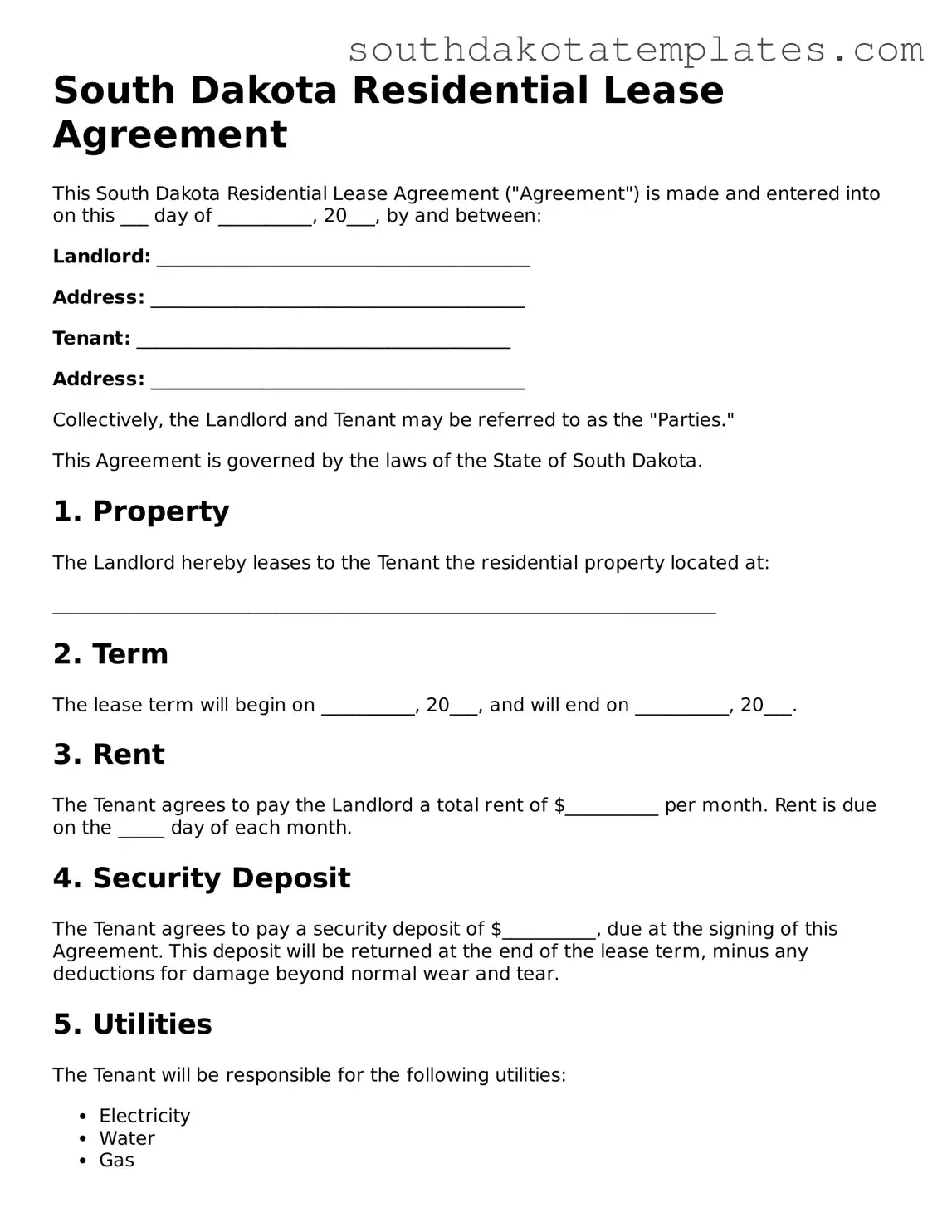Free South Dakota Residential Lease Agreement Document
The South Dakota Residential Lease Agreement is a legally binding document that outlines the terms and conditions between a landlord and tenant for renting residential property. This form serves to protect the rights of both parties while establishing clear expectations regarding rent, maintenance, and other essential aspects of the tenancy. Understanding this agreement is crucial for ensuring a smooth rental experience; fill out the form by clicking the button below.
Get Residential Lease Agreement
